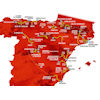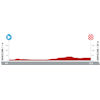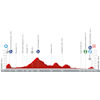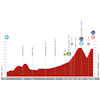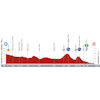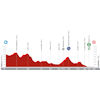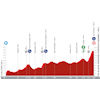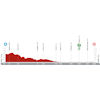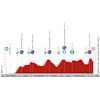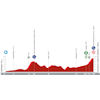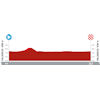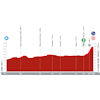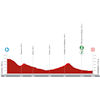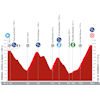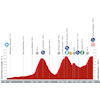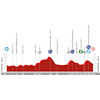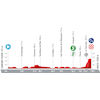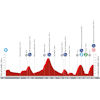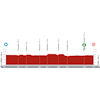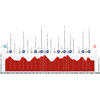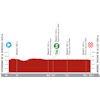La Vuelta opens with a team time trial of 14.8 kilometres in Barcelona and the 2nd stage starts in Mataró to finish with a punchy finale on the Montjuïc in the Catalan capital.
Stage 3 travels to Andorra to finish in the ski resort above Arinsal. The finish climb is 8.3 kilometres long and averages 7.7%. La Vuelta then leaves the Pyrenees behind for stage 4, an expected sprint finish, and stage 5, a day for the breakaway.
The Tour of Spain returns to the Valencia region in the second part of the first week. Stage 6 is a hilly race with a brutal finish near the Javalambre Observatory. The finish climb throws in 10.9 kilometres at 8%, but the second part is much harder than that average suggests.
It’s back to the sprinters in stage 7, while stage 8 travels from Denia to Xorret de Catí, where Julian Alaphilippe triumphed in 2017. The finale opens with a wall-like structure – 3.9 kilometres at 11.4% – before a 2 kilometres downhill precedes a slightly uphill last kilometre.
Stage 9 travels on mountainous terrain to an irregular finish climb of 8.2 kilometres long. Double digit sections alternate with short downhills, resulting in a misleading average gradient of 5.5%.
Week 2
The deep – and soaring – south of Spain is not included in 2023. The lion’s share of the route is situated in the northern part of Spain. The second week of action opens with an individual time trial in Valladolid before the 2020 finish climb to Laguna Negra returns in the finale of stage 11. Three years ago, Dan Martin took the win ahead of Primoz Roglic and Richard Carapaz on the 6.5 kilometres at 5.8%. But the damage will be done in the last 500 metres, where the road ramps up to 11.2%.
The 12th stage is expected to see a fast finishers showdown before stage 13 is quite the opposite with intermediate ascents up the Col d’Aubisque and the Col de Spandelles before a mountain top finish at the iconic Col du Tourmalet.
And, more hardship to come, as stage 14 traverses both the French and Spanish side of the Pyrenees and finishes uphill in ski resort Larra-Belagua. Stage 15 goes from Pamplona to Lekunberri and finishes on descent.
Week 3
Stage 16 is played out on lumpy terrain, but goes off with a bang on a 4.8 kilometres climb at 8.4%. Over half of it is double digit material, so it’s a proper way to get warmed up for the monster race to El Angliru. The 17th stage could turn out to be pre-decisive in terms of the overall victory with its 12.4 kilometres finale with an average gradient of 9.8%.
Stage 18 continues in the same vein. Following three intermediate climbs the race concludes with a double ascent of 8.3 kilometres long with an average gradient of 8.6%. Stage 19 stands in stark contrast, as the route hardly features any vertical metres.
And… buckle up for the last chance for climbers. Stage 20 is an energy sapping race through the Guadarrama mountains. The route takes in 4,300 metres of climbing spread out over ten classified climbs. A Spanish Liège-Bastogne-Liège to rounds things off…
La Vuelta finishes in Madrid on a flat city circuit, so stage 21 is a perfect opportunity for fast men to shine and for the GC leader to drink in his moment of glory.
Vuelta a España 2023: route, profiles, more
Click on the images to zoom
